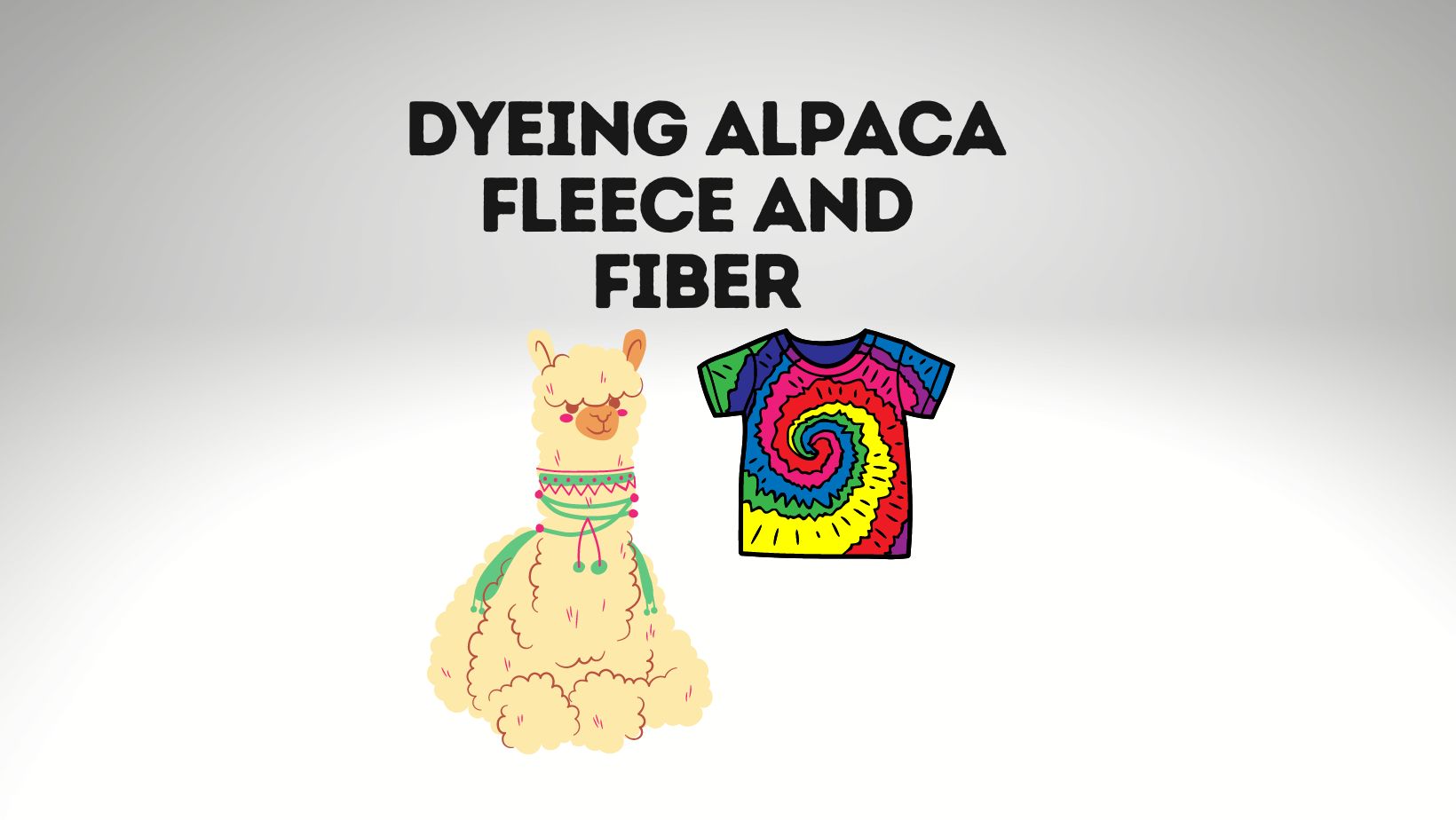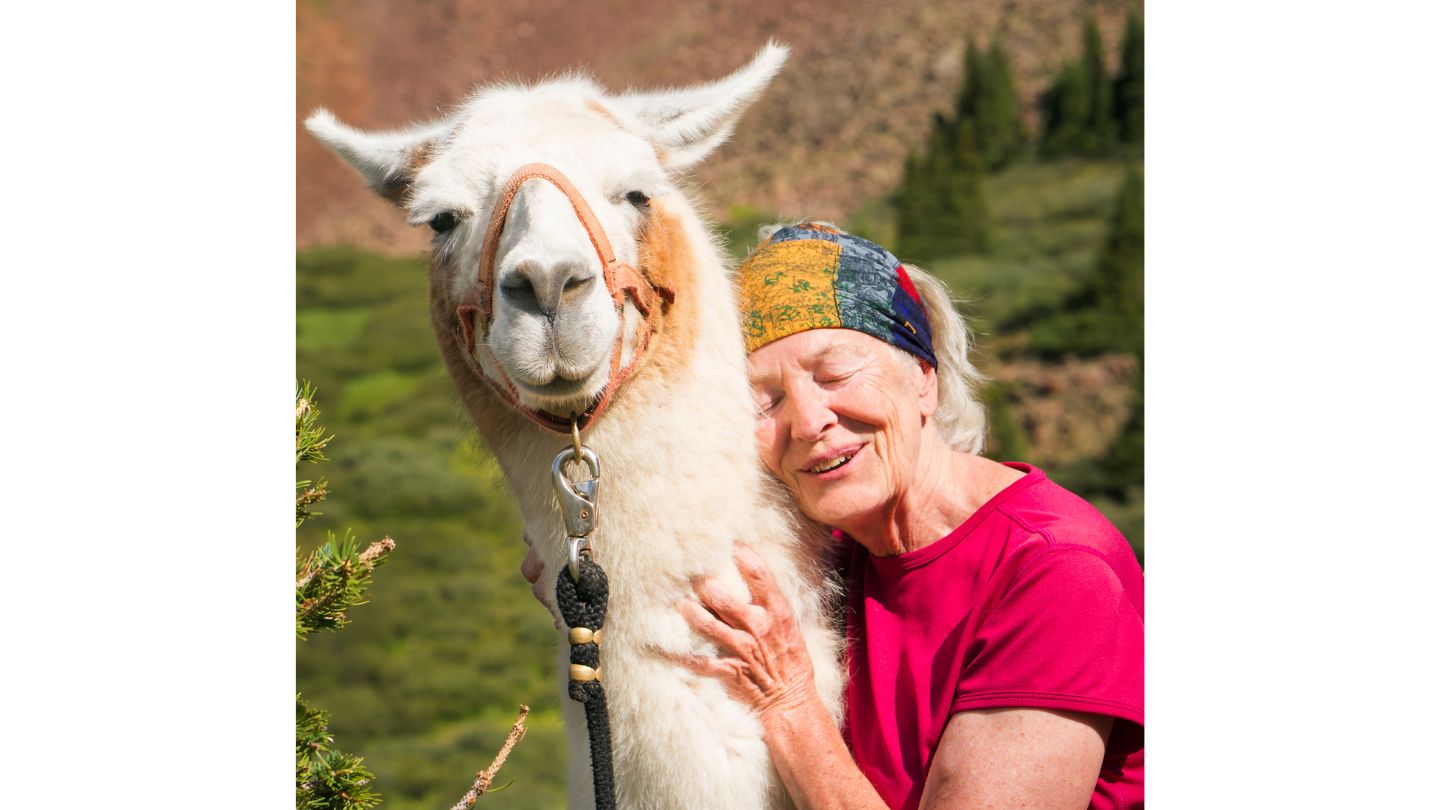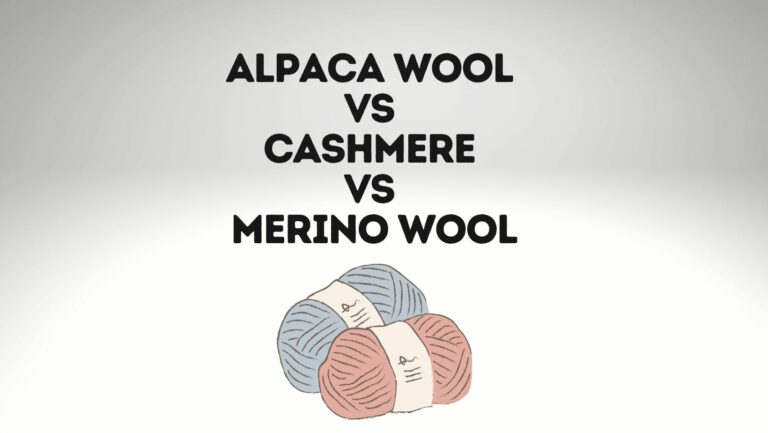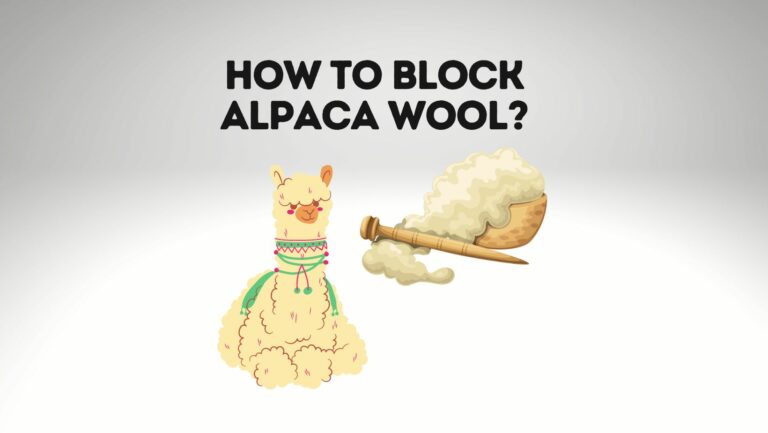
Alpaca fiber is a luxurious, soft material that comes in many gorgeous shades. But what if you want to create something truly unique with your alpaca fiber? Can you dye it? In this blog post, we’ll discuss how to hand-dye alpaca fleece. We’ll cover the basics of dyeing, the materials and tools you need, and some tips and tricks for successful dyeing projects. So if you’re ready to take your crafting skills up a notch, let’s get started!
Post Contents
- 1 What is Alpaca Fiber?
- 2 How to Hand Dye Alpaca Fiber?
- 3 Tips for Dyeing Alpaca Fiber
- 4 Different Ways to Hand Dye Alpaca Fiber
- 5 Alternative Methods for Dyeing Alpaca Fiber
- 6 How To Dye Yarn – Animal Fibers And Acid Dye
- 7 Can You Dye Alpaca Fleece?
- 8 What Is The Best Dye For Alpaca Fiber?
- 9 What Natural Dyes Can You Use For Alpaca Fiber?
- 10 How to use Natural Dyes for Alpaca Fibers?
- 11 Conclusion
What is Alpaca Fiber?
Alpaca fiber is a natural fiber that is obtained from the alpaca, a domesticated species of South American camelid. The fiber is particularly valuable because it is soft, lightweight, and strong. It is also hypoallergenic and does not contain lanolin, making it ideal for people with wool allergies. Alpaca fiber can be used to make a variety of garments, including sweaters, hats, gloves, and scarves.
The process of hand dyeing alpaca fiber is relatively simple and only requires a few supplies. You will need:
-Alpaca fiber
-Dye (acid or natural)
-A pot or container for dyeing
-Water
-A stirring implement
-Protective gloves
-A strainer or colander
To begin, you will need to prepare your workspace and gather all of your supplies. It is important to wear protective gloves when working with dye, as it can be harmful to your skin. Once you have everything you need, you can start the dyeing process.
If you are using acid dye, you will need to pre-mix your dye in a non-reactive container before adding it to the pot of water. Natural dyes do not require this step. Once your dye is mixed (if using acid dye), add the desired amount of water to your pot or container. If you are unsure how much water to use, a good rule of thumb is to add enough water to cover the fiber by a half inch.
How to Hand Dye Alpaca Fiber?
Hand dyeing alpaca fiber is a fun and rewarding process that can be used to create unique and beautiful colors. There are a few things to keep in mind when hand dyeing alpaca fiber, such as the type of dyestuff you use and the amount of time you allow the dyestuff to set. Here are some tips on how to hand dye alpaca fiber:
-Choose your dyestuff. You can use natural or synthetic dyestuffs to hand dye alpaca fiber. Natural dyestuffs include plant materials, animal materials, and minerals, while synthetic dyestuffs are made from chemicals. Each type of dyestuff produces different results, so it’s important to choose the one that will give you the colors you want.
-Prepare your workspace. Before you begin dyeing, make sure you have all the materials you need and that your workspace is clean and well-ventilated.
-Dye the fiber. When dyeing alpaca fiber, it’s important to soak it in warm water for at least 30 minutes before adding the dyestuff. This will help the color take evenly. Once the fiber is soaked, add your dyestuff and allow it to set for at least an hour before rinsing.
-Rinse and dry the dyed fiber. Once you’re satisfied with the color of your dyed alpaca fiber, rinse it in cool water until the water runs clear and then dry it off.
Tips for Dyeing Alpaca Fiber
If you are looking to add some color to your alpaca fiber, there are a few things you should keep in mind.
First, because alpaca fiber is so fine, it can be difficult to get an even dye job. You’ll want to be extra careful when applying the dye and make sure that you work it in thoroughly.
Second, alpaca fiber doesn’t take color as well as other fibers, so you may want to use a darker or more vibrant shade than you would normally use.
Finally, avoid using hot water when dyeing alpaca fiber, as this can cause the fiber to shrink.
Different Ways to Hand Dye Alpaca Fiber
There are many different ways that you can hand dye alpaca fiber. Some of the most common methods include using acid dyes, natural dyes, and plant-based dyes.
Acid dyes are the most commonly used type of dye for hand dyed alpaca fiber. They are easy to use and give vibrant colors.
Natural dyes are another popular option for hand dyed alpaca fiber. These dyes come from plants, minerals, or animals and can give your fiber a more natural look.
Plant-based dyes are made from fruits, vegetables, or other plant materials and can provide beautiful colors for your hand dyed alpaca fiber.
Whatever method you choose, be sure to follow the instructions carefully and use the right dyestuff for your fiber. Hand dyeing alpaca fiber is a fun and rewarding process that can be used to create unique and beautiful colors.
Alternative Methods for Dyeing Alpaca Fiber
Alpaca fiber can also be dyed using alternative methods. These include using natural dyes, chemical dyes, and even Kool-Aid!
There are two ways that are frequently used in the Andes area to dye alpaca blue, depending on what the weavers have access to. One of them works with the indigenous Tara bean, while the other with the lower-lying Indigo plant. Both are heated in water together with the alpaca wool during the colouring process.
How To Dye Yarn – Animal Fibers And Acid Dye
Acid dyes are the best choice for dyeing protein fibers like alpaca, as they give the brightest and most colorfast results. You’ll need to use a vinegar or acid-based fixative to set the dye, which you can do either before or after spinning the fiber into yarn.
To hand-dye alpaca fiber with acid dyes:
1. Soak your fiber in warm water with a dash of dish soap to remove any dirt or oils. Drain and rinse well.
2. Fill a stainless steel pot with enough water to completely cover your fiber, and add 1 cup of white vinegar per pound of fiber.
3. Heat the water to just below boiling, then add your pre-measured acid dyes and stir gently until dissolved. To achieve variegated colors, apply different colors in random sections along the length of the fiber.
4. Immerse your soaked and drained fiber in the dyebath, using wooden chopsticks or other tools to move it around so all parts are evenly saturated. Allow it to soak for at least 30 minutes, stirring occasionally.
5. When the desired color is achieved, carefully remove the fiber from the dyebath using tongs or gloves (the water will be hot!). Rinse it in cool water until the water runs clear, then wash it gently in warm soapy water and rinse again. Squeeze out excess moisture and allow it to air-dry.
Can You Dye Alpaca Fleece?
Yes, you can dye alpaca fleece! In fact, hand-dyeing alpaca fleece is a great way to add some extra color and personality to your finished product. There are a few things to keep in mind when dyeing alpaca fleece, however.
First, because alpaca fiber is so absorbent, you’ll need to use more dye than you would for other fibers.
Second, be sure to use a gentle, low-heat setting on your dyepot or stovetop; otherwise, you risk damaging the delicate alpaca fibers.
Finally, remember that hand-dyed yarns and fabrics will always have slight variations in color – that’s part of the charm!
What Is The Best Dye For Alpaca Fiber?
When it comes to dyeing alpaca fiber, there are a few different options available. The best dye for alpaca fiber will depend on the desired results and the type of fiber being dyed.
Alpaca fiber can be dyed using either natural or synthetic dyes. Natural dyes are typically made from plant or animal materials, while synthetic dyes are man-made.
Natural dyes are often more gentle on the fibers and may be less likely to cause irritation, but they can be more expensive and difficult to find.
Synthetic dyes are usually less expensive and easier to find, but they may be harsher on the fibers and more likely to cause irritation.
When choosing a dye, it is important to consider the type of fiber being dyed, the desired results, and any potential allergies or sensitivities.
What Natural Dyes Can You Use For Alpaca Fiber?
Assuming you would like a list of natural dyes that can be used on alpaca fiber:
Cochineal: Cochineal is a red dye derived from the cochineal insect. It produces a rich, deep red hue and is one of the most commonly used natural dyes.
Indigo: Indigo is another widely used natural dye and it produces a beautiful blue color. It is derived from the leaves of the indigo plant.
Walnut Hulls: Walnut hulls can be used to produce brown, black, or green dyes depending on how they are prepared.
Osage Orange: Osage orange produces a yellow dye and is derived from the bark of the osage orange tree.
Pokeberry: Pokeberry can be used to produce pink, purple, or red dyes depending on how it is prepared.
Tara bean: Tara bean can be used to produce a brown or black dye.
These are just a few of the many natural dyes that can be used to hand-dye alpaca fiber. For more information on natural dyes and how to use them, please consult a comprehensive guide such as “The Modern Natural Dyer” by Kristine Vejar.
Natural Dyes
Natural dyes are made from plant, animal, or mineral sources. They are non-toxic and environmentally friendly. Many common plants can be used to create natural dyes, such as:
· Beets
· Blackberries
· Blueberries
· Coffee grounds
· Cabbage leaves
· Carrots
· Cranberries
· Elderberries
How to use Natural Dyes for Alpaca Fibers?
To use natural dyes, the alpaca fiber must be soaked in a mordant. A mordant is a substance that helps the dye adhere to the fiber. Common mordants include:
– Alum (potassium aluminum sulfate)
– Chromium oxide
– Iron sulfate
Once the fiber has been soaked in the mordant, it can then be dyed using the desired plant material. The dyebath should be simmered for about an hour before adding the fiber. The fiber should be simmered in the dyebath for another hour before being rinsed and dried.
Conclusion
In conclusion, hand-dyeing alpaca fiber is a wonderful way to create unique and beautiful items. It also allows you to customize your project with different colors and effects that can’t be achieved any other way. With the right technique and supplies, dyeing alpaca fleece can be both enjoyable and rewarding! Whether you are creating an item for yourself or as a gift for someone special, it will definitely be something they treasure forever.

Hi, I am Dale. My husband and I bought our first llama, an 18-month-old male llama, Pumpernickel, in 1984. Since then, they are evergrowing; LlamaWeb is intended to provide information about llamas for people interested in these South American camelids.






